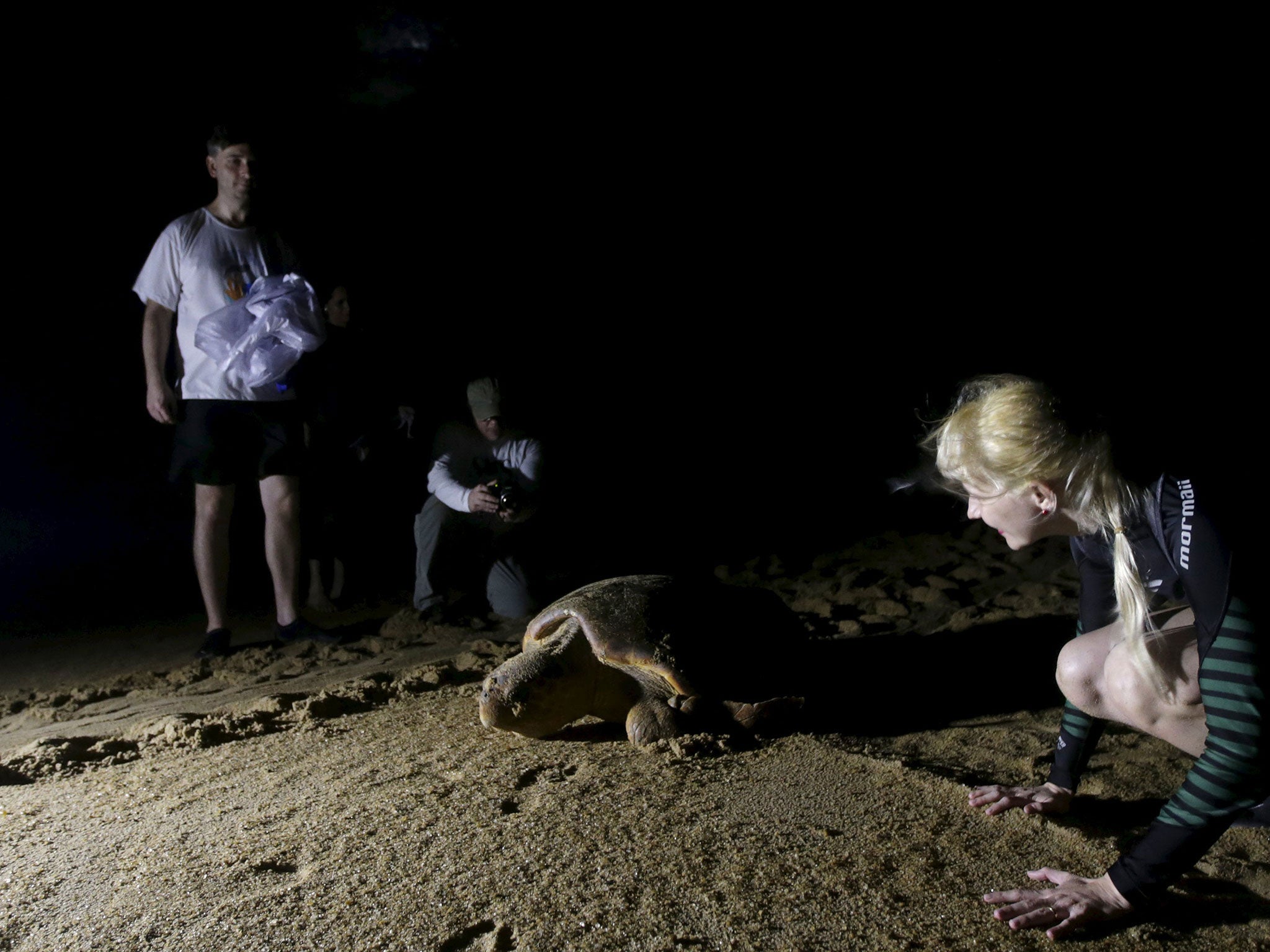Brazil faces environmental disaster as deadly tide of orange mud bleeds into sea following dam failure
The collapse of a dam has caused Brazil’s worst environmental disaster, with a slurry of silt engulfing a community and threatening wildlife. Donna Bowater and Priscilla Moraes in Rio de Janeiro and Pedro Henriques in Mariana report
Locals watched on in despair as the current of mineral waste turned the Doce River in south-east Brazil orange as it bled into the Atlantic Ocean.
The tide of clay-coloured sludge, released when a dam collapsed earlier this month, has already been called the worst environmental disaster in Brazil after it began leaking into the ecosystem more than 400 miles from the dam site in Mariana, Minas Gerais. After hitting the sea over the weekend, it is expected to disperse almost four miles to the north.
People from nearby towns gathered on bridges near the river mouth to see the mud bleed into the sea, with some protesting against the pollution of one of the region’s most important rivers.
Izabella Teixeira, the country’s Environment Minister, is due to visit the riverside town of Linhares in Espirito Santo, with the state governor Paulo Hartung today.
The incident has left a dozen dead and hundreds displaced. Four bodies have yet to be identified and another 12 remain missing.
The dam, which collapsed on 5 November, was operated by Samarco, a joint venture between the mining giants BHP Billiton and Vale.
Rosilene Gonçalves, who lived in the town of Bento Rodrigues, which was wiped out by the river of mud, said: “The mud came so high it looked like a fire burning up on the hill. It all happened in just 10 minutes.”
“I ran down to where my brother was with a six-week-old child. I put the child in the arms of my sister so she could run,” she added. “We didn’t know if we were saving friend or foe, it was just the people who were there.”
Samarco, which has already been fined 250 million reais (£44m) and had its licence suspended, said it had put survivors in nearby hotels and guesthouses, but many complained about cramped conditions of up to 20 sharing a room.

Meanwhile, the company has installed 9km of barriers and sea fences to try to protect wildlife from the flow of mud. However, it said specialist advice was to allow it to reach the sea where it would be diluted. The company has insisted the waste is not toxic.
“The recommendation of these institutions and environmental organisations is to allow the turbidity plume to reach the sea, which is the most appropriate body of water to receive it,” a company statement said.
“To this end, Samarco is supplying equipment to remove the sand banks which impede the river’s access to the ocean.”
The government issued reassurances that the mud was unlikely to reach the Abrolhos coral reef, around 155 miles away from Linhares.
Work is also under way to guarantee water supplies to nearby towns and villages.
Conservationists have been transferring sea turtle nests away from affected areas and installing barriers to try to protect spawning areas from the mud. The government said the biggest impact was on fish, especially those found close to the surface.
President Dilma Rousseff said the recovery of the Doce River was “the only way we can respond to the population affected on the river in a positive way”.
“If there was this disaster, this calamity, if we lose lives, if local populations were hit, we have to set an example: to recover this river, revitalise it – not only looking at what happened in the very short term, but make it again the river it was before we arrived there,” she added.
Authorities in Espirito Santo said there were plans to take legal action against Samarco, using the 2010 Gulf of Mexico oil spillage as a model.
Representatives from Minas Gerais and Espirito Santo are due to meet the Attorney General tomorrow. “The model being considered is what was adopted by states, cities and the US government, which unified legal proceedings against British Petroleum, because of the oil spill in the Gulf of Mexico in 2010, “ Mr Hartung said.
“We will increase co-ordination between governments and our prosecutors, so there is the greatest unity in the legal field.”
Following the incident, Samarco said it was reinforcing its other two dams, which had been classified at the same risk level as the collapsed dam by the National Department for Mineral Production.
But in the wake of the disaster, critics have blamed insufficient government oversight of the country’s 15,000 dams. A report by the National Water Agency earlier this year revealed that only 2,000 dams were assessed for security and around one in 10 were surveyed for potential associated damage.
The agency also found the biggest spike in accidents last year since 2011, with five accidents resulting in nine deaths.
Sergio da Mata, a history professor at the Federal University of Ouro Preto, close to Mariana, said: “This is a dilemma. It is an industry that has a policy of little or no environmental responsibility.
“It is a predatory industry. Supervisory organs are either rigged, or are debilitated so they almost deliberate on the part of the executive power, whether at the state level or federal. Power switches do not change anything.
“It’s tragic from various points of view.”
Samarco has committed to a 1bn reais emergency fund for reparations and compensation.
But in a legislative assembly meeting between residents, Samarco representatives and local authorities, Ms Gonçalves added: “You don’t know the pain we’re feeling. You didn’t lose anyone. The pain is ours. So I ask that you look with care. We want our place back with everything to which we have a right.”
Join our commenting forum
Join thought-provoking conversations, follow other Independent readers and see their replies
Comments